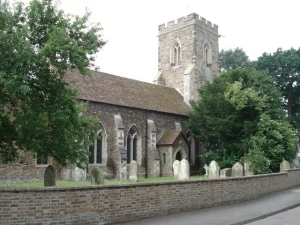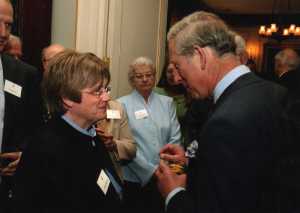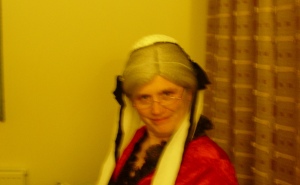A homily for St Clement’s Day and memories of St Clements School in Boscombe
November 23 rd is day on which the church honours St Clement – and he has a special significance for me….
http://comeandseeicons.com/c/bmp08.htm
Here is a short homily for St Clement:
On November 23rd The Church honours St Clement,Bishop of Rome and Martyr. My first school in Boscombe, Bournemouth was St Clements Primary School – a church school closely associated with St Clements Church – one of Bournemouth’s Anglo-Catholic havens. It is a Grade 1 listed Victorian Gothic building by the architect Sedding. When I was a youngster at the school in the 1960’s whenever it was St Clements Day we all had to go to church for a service and then had the day off – which was very pleasing to a little girl who found school rather daunting to start with.
I don’t think we were ever told who St Clement was – and in case you aren’t too sure here a few facts about him.
He was Born ca. 91 – 100 AD
St. Clement, according to tradition, was ordained by St Peter himself. Some early writers, indeed, thought that Clement was Peter’s immediate successor, but modern scholars agree that he is Peter’s third successor.
St. Clement has been identified with the Clement mentioned by St. Paul in his Epistle to the Philippians; but that Clement seems to have been a Philippian.
Others have thought he was a cousin of the Roman Emperors Titus and Domitian, but early writers make no mention of this fact, so it is unlikely.
Modern scholars think that St. Clement was a freedman or the son of a freedman of the imperial household. It is doubtful whether he was of Jewish or Gentile origin. Some would argue for Jewish descent because his famous epistle is so steeped in the Old Testament.
St. Clement was a Roman; he was martyred–at some place away from Rome. This is about all that is known for certain of Clement’s death. The Greek “Acts of the Martyrs” (written in the fourth century) gives many and interesting details.
St. Clement was exiled by the Emperor Trajan to the modern Crimea. There the holy Pope worked with such zeal among the prisoners labouring in the mines that he was condemned to death. He was thrown into the sea with an anchor tied around his neck. This is probable enough, but the story goes on to say that the sea flowed back a mile or so to reveal the body of the saint resting in a beautiful marble shrine.
In the ninth century, St. Cyril, the Apostle of the Slavs, discovered some bones and an anchor in a Crimean mound. He translated these bones to Rome, where Pope Hadrian II placed them in the altar of St. Clement’s Basilica.
Whether or not these bones are authentic, St. Clement left us a real relic of the highest value in his famous letter to the Corinthians.
This epistle ( 75-80AD) which modern scholars agree is authentic, rebukes the Corinthians for a schism which had broken out in their church. Written while one of the apostles was still alive, this letter of Clement is a fascinating Christian document. It is interesting indeed that it shows the fourth pope interfering to put another apostolic church in order.
It is also interesting that there is evidence that the early Christian church in Egypt and Alexandria regarded Clement’s epistle to Corinth as part of the New Testament.
The feast of St. Clement is celebrated on November 23.
Well, I knew nothing about this great man when I was little – but I have learnt one thing – I know now why our school badge had an anchor on it. Taken me all these years to find that out!
The thought I would leave with you today hasn’t got anything to do directly with St Clement himself. It is about my early memories of being in St Clements Church, Boscombe. Built in 1876 after a late Gothic style, it was a huge barn of a place with a priest, Father Henry who used to feel remote and scarry. He would disappear up into the sanctuary, clouded in incense, and mumble words which I couldn’t understand. My Mum used to tell me off for fidgeting, and it was all very different from the Salvation Army worship which the family used to go to sometimes as well.
Church was a frightening, dark place and for many years after we left Boscombe, I didn’t like going into them.
So, my early experience has made me very sensitive about what sort of image of God’s love we offer to small children now when they come through the doors of our churches. Of course there has to be reverence and respect and proper behaviour. But there also has to be human warmth and comfort and a message that God is not a remote stern being but in Jesus is love and welcome and warmth incarnate.
May we all play our part in being part of God’s welcoming committee as it were and make sure that children who are with us especially over this Christmas period feel safe, accepted and valued.
The grace of our Lord Jesus Christ be with you and with all men in all places who have been called by God and through Him, through whom is glory and honour, power and greatness and eternal dominion, unto Him, from the ages past and for ever and ever. Amen.” (64-5.)
* If anyone who went to St Clements school c 1959-1963 stumbles upon this – get in touch!!!!
3 Comments »
Leave a comment
-
Archives
- June 2016 (1)
- November 2015 (1)
- July 2014 (1)
- January 2014 (1)
- December 2013 (2)
- August 2013 (1)
- July 2013 (1)
- June 2013 (5)
- May 2013 (5)
- April 2013 (1)
- March 2013 (3)
- February 2013 (1)
-
Categories
-
RSS
Entries RSS
Comments RSS








Hello Annette, I stumbled upon your site whilst searching the web for info on St Clements Primary as I attended there in 1965/ 66 when a Mr Winwood was the headmaster….were you there at that time? I remember the Gothic architecture and the cloisters, and yes I have to agree, it was all rather intimidating for a child. I also remember the playground with the ‘geodome’ climbing frame, do you? My memories of the school are unfortunately not happy ones, are yours?. Lori
Hello Annette and Lori 🙂
I went to St Clements between 1970 and 1974. Mr Winwood was there when I joined (and was very kind to me) but by the time I left we had a headmistress
Mrs Badham (not sure of the spelling). At any rate she was married to the Canon of the church. My memories of the church are some of the happiest of my life, particularly during a very very troubled childhood. I was a member of the church choir and was taught sunday school by the nuns. For me the church was the most beautiful and safe place in the whole world and I still feel that sense of safety and peace when I enter most places of worship. I am sorry that your experience was so different but hope you will be pleased to learn that only a few years later my experiences and those of my friends was very different 🙂
Thank you for the compliment of posting my work on your blog. My work, however is copyrighted. http://comeandseeicons.com/c/bmp08.htm
You may have my permission to continue to use the work but please connect some sort of acknowledgement/link with the image if you please.